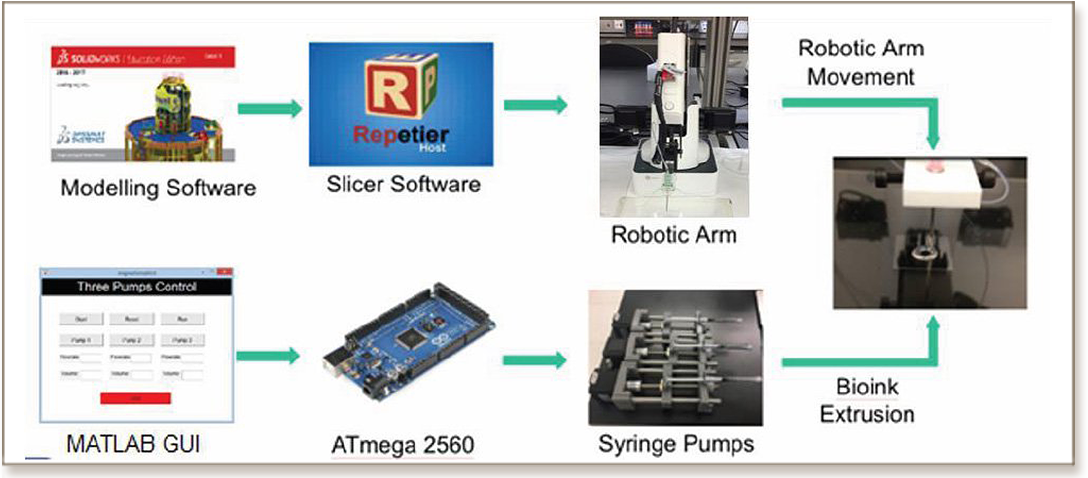
Development of a robotic 3D bioprinting and microfluidic pumping system for tissue and organ engineering
K. Kahin, Z. Khan, M. Albagami, S. Usman, S. Bahnshal, H. Alwazani, M.A. Majid, S. Rauf, C. Hauser
Proceedings Volume 10875, Microfluidics, BioMEMS, and Medical Microsystems XVII; 108750Q, 2019

The technology of 3D bioprinting has gained significant interest in biomedical engineering, regenerative medicine, and the pharmaceutical industry. Providing a new scope in tissue and organ printing, 3D bioprinters are becoming commercialized for biological processes. However, the current technology is costly, ranging from USD$9,000-$30,000 and is limited to customized extrusion methods. Multiple microfluidic pump systems for bioink extrusion are commercially available at USD$30,000. Additionally, the use of Cartesian systems for 3D printing restricts the user to three axes of movement and makes multi-material modeling a challenge. Consequently, it was proposed to design a cost effective robotic 3D bioprinting system, compatible with peptide bioinks which were developed at KAUST Laboratory for Nanomedicine. The components of the system included a programmable robotic arm, an extruder for bioprinting, and multiple microfluidic pumps. The extruder was designed using a coaxial nozzle made of three inlets and one outlet. The programmable microfluidic pumps transported the peptide bioink, phosphate buffer saline (PBS) and human skin fibroblast cells (in cell culture media solution) through the nozzle to extrude a peptide nanogel thread. Model cell structures were printed and monitored for a period of two weeks and subsequently found to be alive and healthy. The system was kept well under a budget of USD$3,500. Future modifications of the current system will include adding a custom bioprinting arm to allow multi-material printing which can fully integrate and synchronize between the pumps and the robotic arm. This system will allow the production of a more advanced robotic arm-based 3D bioprinting system in the future.

"KAUST shall be a beacon for peace, hope and reconciliation, and shall serve the people of the Kingdom and the world."
King Abdullah bin Abdulaziz Al Saud, 1924 – 2015
Thuwal 23955-6900, Kingdom of Saudi Arabia
Al-Haytham Building (Bldg. 2)
© King Abdullah University of Science and Technology. All rights reserved